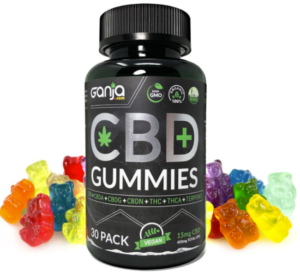Annals of marketing: functional (CBD, vitamins) gummy candies and chewing gums

ConfectionaryNews.com, a daily newsletter from this industry, has a Special Edition: The Rise of Functional Jellies.
“Functional,” you may recall, means something added over and above what is in the food to begin with. In the case of gummy bears, it means added vitamins, minerals, herbals, or, these days, CBD.
The demand for functional jellies is growing with herbal extracts, cannabinoids and vitamins proving a good fit with the mainstream candy sector.
One of the quickest ways of getting nutrients into the body is via gums or jellies.
“Gummies have a slightly nostalgic feeling of something that we had as children, but in this version, it is completely transformed into a product that we can feel good about eating and that can easily fit into a healthy diet for kids and adults,” said Amanda Vagochik, VP of innovation at SinnovaTek.
In the articles below we look at how street-smart entrepreneurs are disrupting the industry with innovation and a fresh attitude and how CBD edibles are also changing the landscape of functionality in candy.
- Functional jellies, demand is growing thanks to CBD: The demand for functionality is growing for convenient, but nutritious and tasty product solutions. Herbal extracts, which contain polyphenols caffeine, cannabinoids or vitamins have a good fit with the mainstream candy sector as one of the quickest ways of getting nutrients into the body is via gums or jellies… Read
- Matcha Bears pack energy and antioxidants in gummy form: Three New York City entrepreneurs have developed gluten-free gummies infused with premium grade matcha that walk the line between functional and fun, reaching those who drink tea and those who just want a boost of energy at any time of day… Read
- Interview: SmartSweets primps the gummy category for future with ‘kick sugar’ ethos: At the ripe age of 21, Tara Bosch wanted to cut her connection with sugary gummy worms. The result: a line of a favorite gummies made with stevia, coconut oil, tapioca and chicory root fiber, now available – in bright, bold packaging – online and in thousands of stores in the US and Canada… Read
- Pollen’s CBD gummies are the new kids on the block, with some history: Pollen, a new brand established by Melanie Goldsmith, aims to make ‘CBD simple’ in relation to its use in gummies and jellies… Read
- Upcycled, high protein gummies emerge from North Carolina produce and food science: SinnovaVita uses microwave-assisted technology to extract protein-packed polyphenols from otherwise unwanted fruits and vegetables. They are sold under the Ripe Revival brand, which US grocery chain Kroger named a winner in its anti-hunger campaign… Read
- Vegan Gummy Bears continue winning streak: Vegan and sugar free brand Free From Fellows has been recognized again for its Gummy Bears range, picking up an award at the Great British Food awards… Read
- CREATIVE CONVERSATIONS: Danny Lowe, founder/director, BLOCKHEAD: BLOCKHEAD is a relatively new start up that makes functional confectionery such as Blockhead caffeine Energy Gum and Blockhead Vitamin Gum, available in retail stores across the UK. Founder Danny Lowe tells Confectionery News what inspired him to get into this high-energy market… Read


